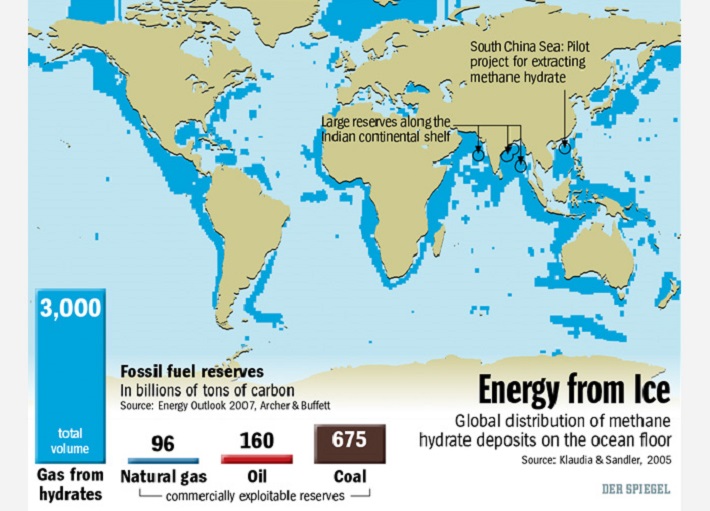 Most of the energy that we use for electricity comes from fossil fuels, like coal, oil, and natural gas.
Most of the energy that we use for electricity comes from fossil fuels, like coal, oil, and natural gas.
Unfortunately, the enormous amount of energy we consume every day has depleted these non-renewable natural resources.
As most electrical facilities and appliances rely on these natural resources, researchers have been looking for alternative ways to supply renewable energy. The more common sources of renewable energy are nuclear, solar, wind, and water, but each has their own disadvantages.
But now, there is a possible new source of energy that is similar to the commonly-used coal, oil, and natural gas– flammable ice.
What Is Flammable Ice?
Flammable ice looks like ice and burns like fossil fuels. But how?
Flammable ice consists of natural gas trapped inside water molecules. When set to flame, the gas in the ice will catch fire, giving it the name "fire ice" or "flammable ice."
Scientists in China have discovered a way to extract gas out of flammable ice.
Flammable ice is officially known as a methane hydrate– a combination of water and methane gas. Methane is a natural odorless and colorless gas that can be found in the atmosphere and in the decaying matter of living things. When found underground, methane is also a major component of natural gas and can be burned to produce energy.
Methane hydrate is mostly formed when organic matter settles on the sea or ocean floors. Under low temperatures and high pressures, methane produced from organic matter is pressed down and trapped by water molecules in the sea. If conditions are right, ice will form around this methane, creating flammable ice.
Future Plans For Flammable Ice
 As the world's largest energy consumer, China plans to use flammable ice as another source of energy. China has a large reserve of flammable ice in the South China Sea which was discovered back in 2007.
As the world's largest energy consumer, China plans to use flammable ice as another source of energy. China has a large reserve of flammable ice in the South China Sea which was discovered back in 2007.
With this recent discovery, natural gas can be extracted from this flammable ice to meet future energy demands. For countries that are not major producers of oil and natural gas, flammable ice is certainly an option of energy that they can use.
Unfortunately, fire ice also has its disadvantages. Fire ice is still a fossil fuel and emits greenhouse gases, like natural gas. Also, it is extremely difficult and quite expensive to extract methane hydrate from the ocean floor – careful attention is needed to prevent leakage of methane into the atmosphere.
Similar to carbon dioxide, methane is also a heat-trapping gas and contributes to global warming. As long as utmost care is taken to control the use of fire ice, flammable ice could play a huge part in how we consume energy in the future.







